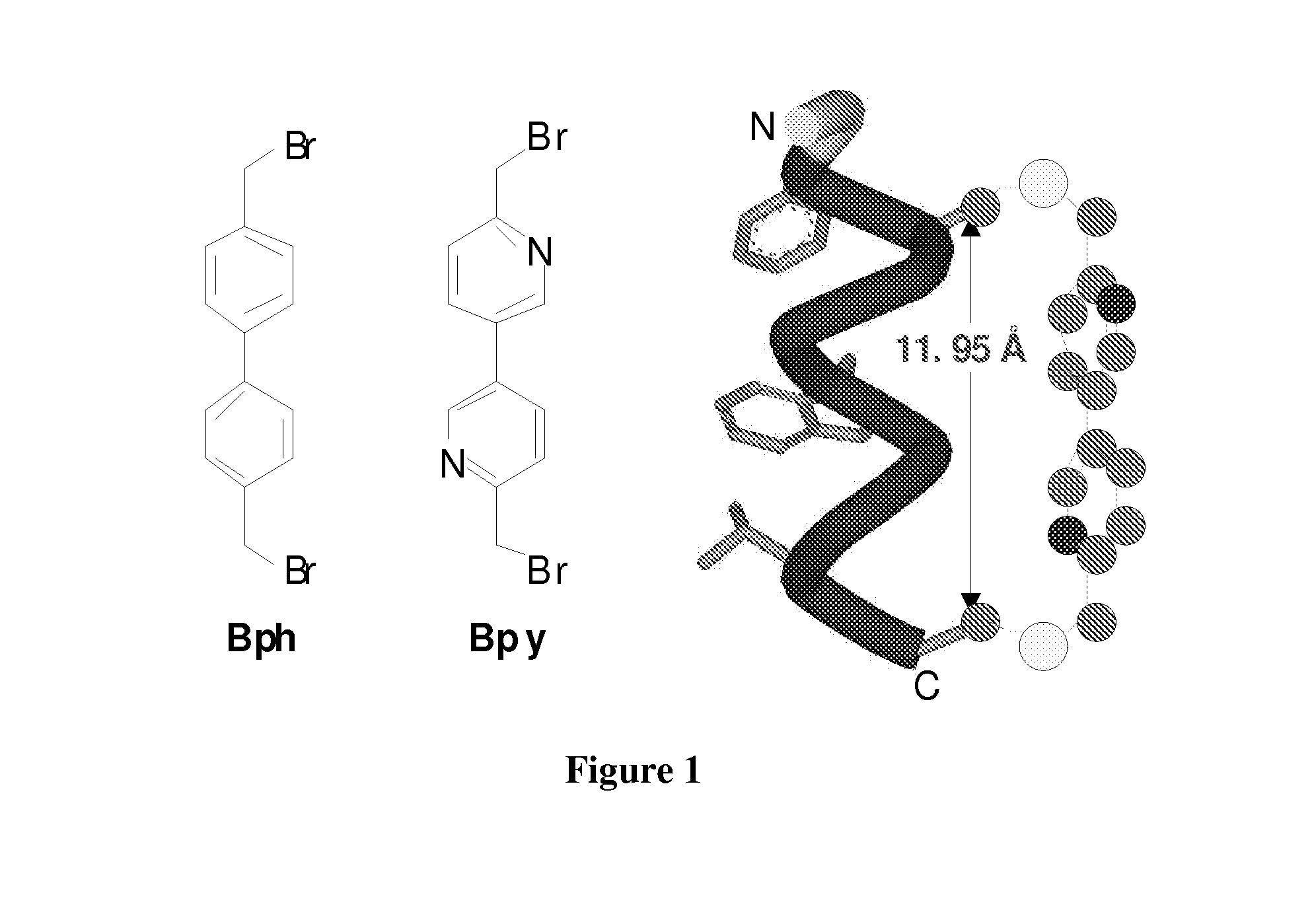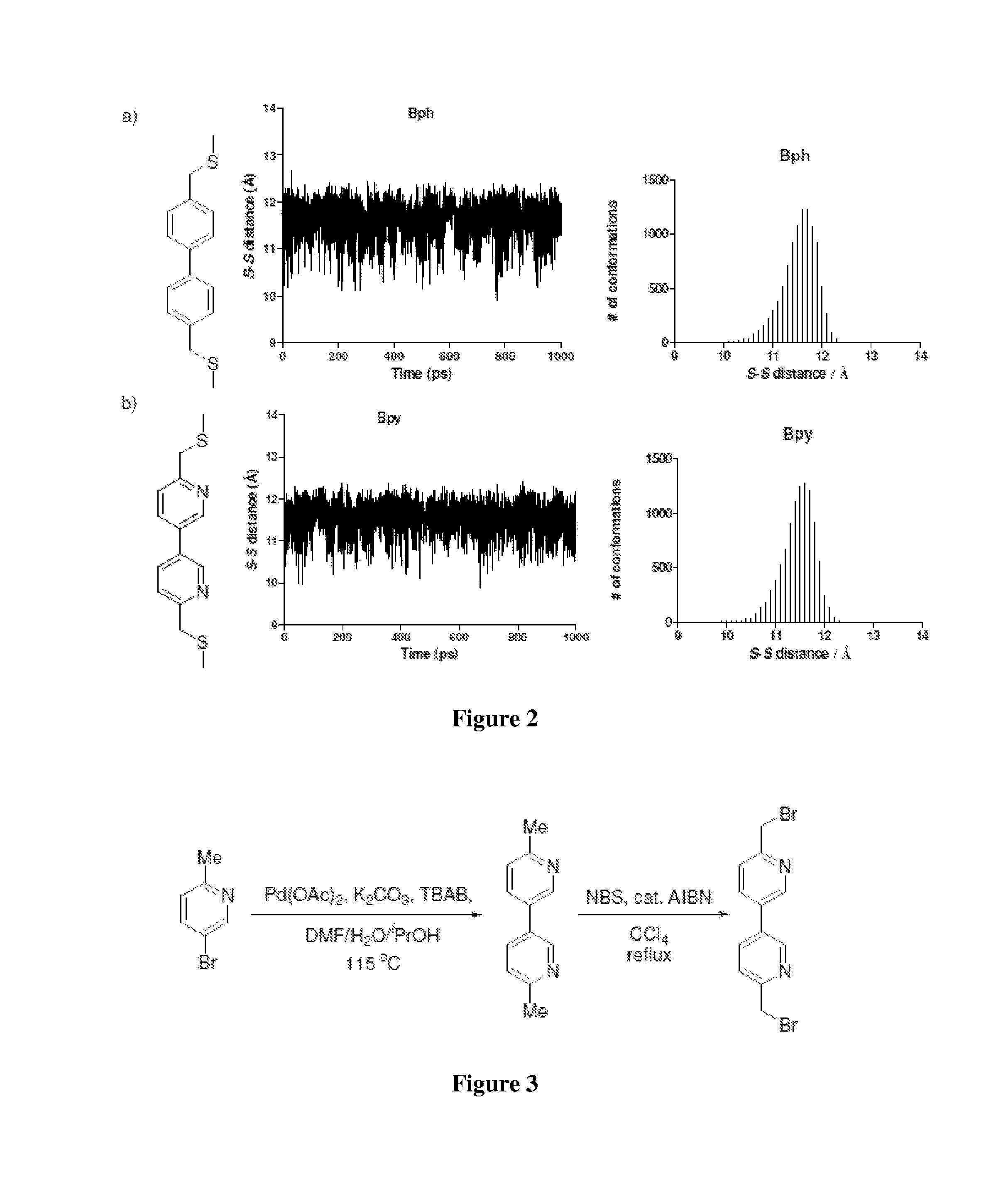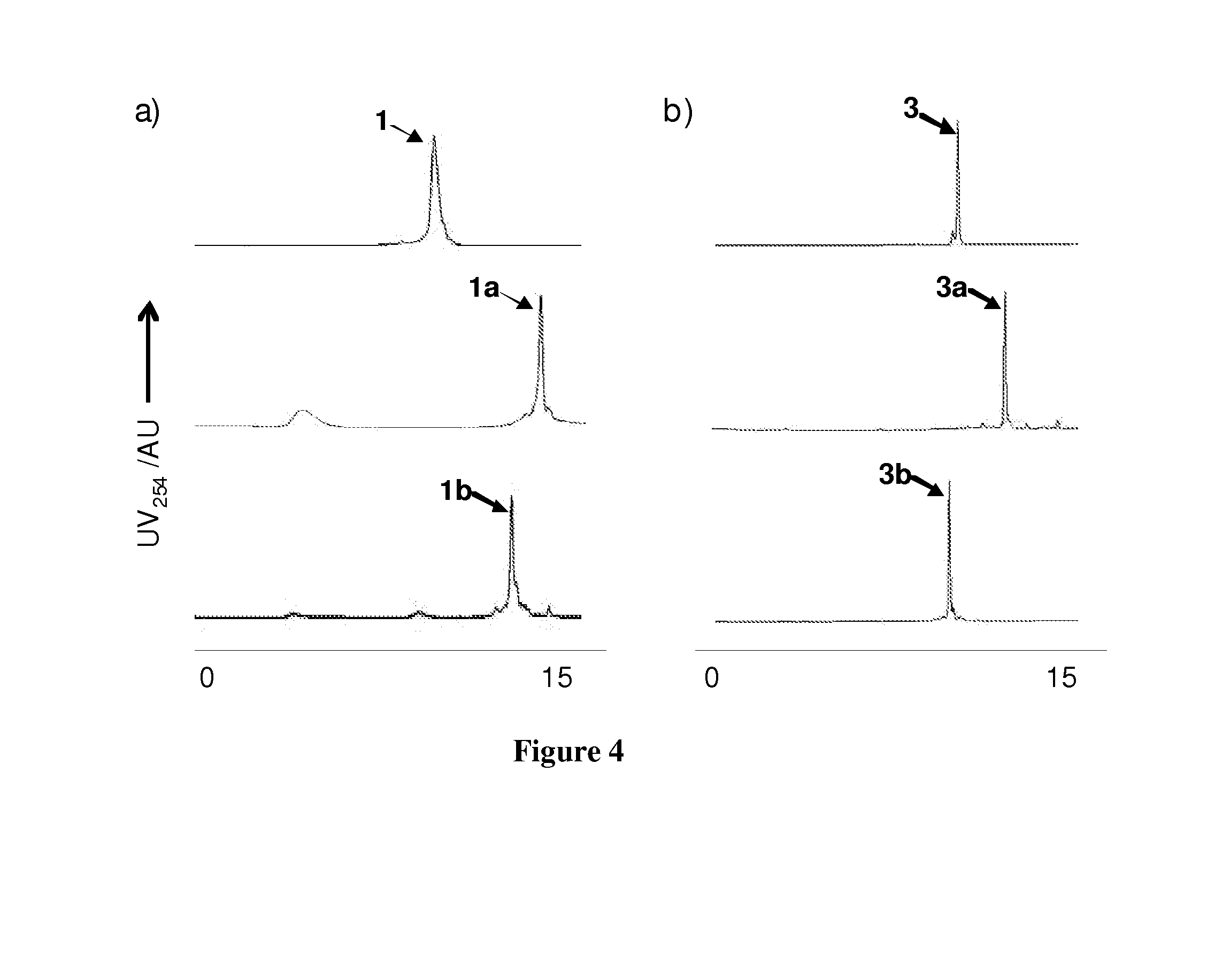Cross-Linked Peptides and Proteins, Methods of Making Same, and Uses Thereof
a technology which is applied in the field of cross-linked peptides and proteins, can solve the problems of significant mass needs to be added to the peptide, and the peptides are rarely good drug candidates, so as to improve the penetration into cells, improve the properties, and reduce the effect of cytotoxicity
- Summary
- Abstract
- Description
- Claims
- Application Information
AI Technical Summary
Benefits of technology
Problems solved by technology
Method used
Image
Examples
example 1
[0080]In order to evaluate the effect of cysteine cross linking on cell permeability, PDI peptide was used as a model peptide because (i) PDI has shown to be an excellent dual inhibitor of the p53-MDM2 and the p53-MDMX interactions, the two validated cancer targets, and (ii) crystal structures of PDI and its analogs in complexes with MDM2 and MDMX have been solved recently. However, PDI was found to be cell impermeable, greatly diminishing its therapeutic potential. Since 12-mer PDI (sequence=LTFEHYWAQLTS SEQ ID NO:1) does not encode cysteine, it was reasonable to believe that two residues at the solvent exposed face of the helix could be replaced with cysteines followed by cysteine-specific cross linking. Inspection of the PDI-MDM2 / MDMX complex structures revealed that Glu-4 and Thr-11 are solvent exposed and could be substituted without substantial loss of inhibitory activity, which was confirmed by ELISA (compare 1 to PDI in Table 1). A (D,L)-dicysteine analog 3 was prepared by p...
example 2
[0100]Among the eight BH3-only proteins (Bim, Puma, Bmf, Bad, Bik, Hrk, Bid and Noxa), only Noxa shows selective interaction with Mcl-1. In a competitive binding assay with the immobilized mouse BimBH3-(83-108) peptide, human NoxaBH3-(18-43) showed IC50 values of 24 nM against Mcl-1, 180 nM against Bfl-1 / A1, and >100 μM against Bcl-2, Bcl-xL and Bcl-w. Similarly, BH3 peptides derived from mouse Noxa, NoxaA-(16-41) and NoxaB-(68-93), bind to Mcl-1 selectively with IC50 values of 87 nM and 109 nM, respectively. Notably, NoxaBH3 peptide augments the effect of Bcl-2 / Bcl-xL / Bcl-w-specific BadBH3 in inducing apoptosis in mouse embryonic fibroblasts (MEFs), suggesting that it might be useful in a combination therapy with known small-molecule Bcl-2 inhibitors such as ABT-737. Among the three Noxa BH3 peptides, human Noxa and mouse NoxaA bind to both Mcl-1 and A1, but mouse NoxaB binds only to Mcl-1 with KD of 126 nM as determined by isothermal titration calorimetry at 25° C. All three struc...
example 3
[0108]The cross-linking chemistry also works with proteins containing a helical segment with two cysteines located at the i, i+7 positions. For this purpose, Noxa was fused to the N−1 or C-terminus of ubiquitin to produce Noxa-ubiquitin and ubiquitin-Noxa fusion protein, respectively. After cloning, expression of these two fusion proteins in E. coli, and purification with the Ni-NTA affinity column, cross linking using Bpy cross linker was successfully performed with these proteins, generating Noxa-ubiquitin-Bpy and ubiquitin-Noxa-Bpy. The reaction was monitored by LC-MS and the cross-linking efficiency on these proteins was around 85% when calculated using LC-MS data (FIGS. 16 and 17). In the FP assay, the cross-linking proteins showed drastically increased affinity toward Mcl-1 compared to the parent proteins (Table 6).
TABLE 6Inhibitory activity of Noxa-fused ubiquitin proteins in a competitiveFP assayIC50, Mcl-1Protein Name(nM)Noxa-ubiquitin>2,000Noxa-ubiquitin-Bpy7.5Ubiquitin-No...
PUM
| Property | Measurement | Unit |
|---|---|---|
| Molar density | aaaaa | aaaaa |
| Molar density | aaaaa | aaaaa |
| Molar density | aaaaa | aaaaa |
Abstract
Description
Claims
Application Information
 Login to View More
Login to View More - R&D
- Intellectual Property
- Life Sciences
- Materials
- Tech Scout
- Unparalleled Data Quality
- Higher Quality Content
- 60% Fewer Hallucinations
Browse by: Latest US Patents, China's latest patents, Technical Efficacy Thesaurus, Application Domain, Technology Topic, Popular Technical Reports.
© 2025 PatSnap. All rights reserved.Legal|Privacy policy|Modern Slavery Act Transparency Statement|Sitemap|About US| Contact US: help@patsnap.com



